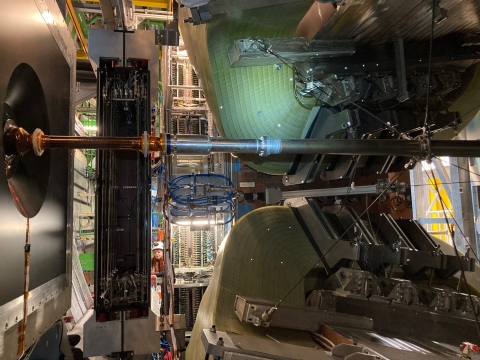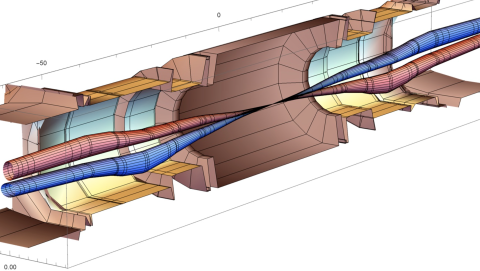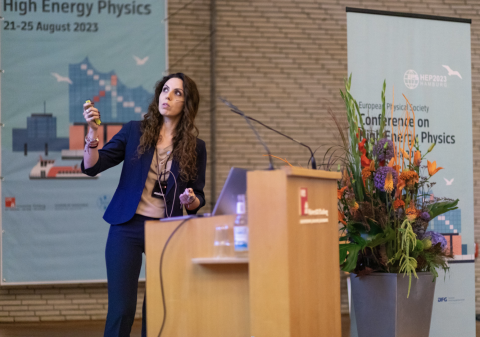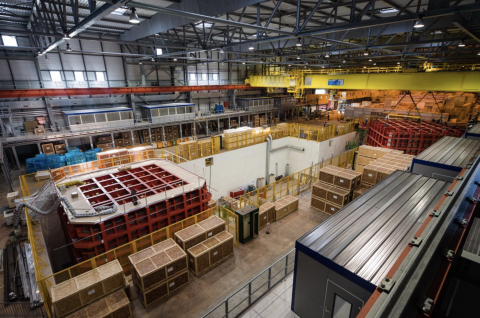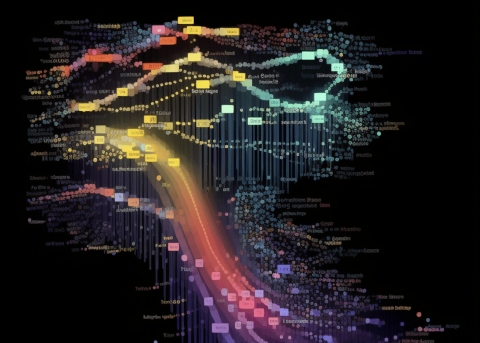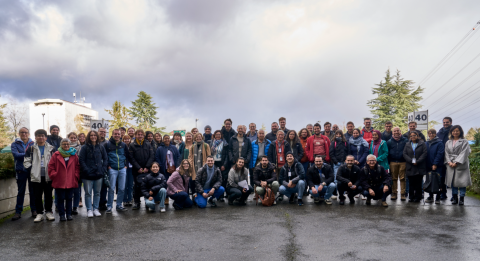December 2023 - February 2024
ALPHA experiment at CERN observes the influence of gravity on antimatter.
In a paper published earlier this autumn in Nature, the ALPHA collaboration at CERN’s Antimatter Factory shows that, within the precision of their experiment, atoms of antihydrogen – a positron orbiting an antiproton – fall to Earth in the…
Read moreUpstream Tracker closing completes installation of the LHCb Upgrade detector
The UT sub-detector is located in front of the LHCb dipole magnet. The images included in this news were taken during the UT closing process around the LHC beam pipe. The UT plays an essential role in achieving the desired processing speed in the…
Read moreEnding the 2023 LHC run with heavy-ion collisions
The LHC schedule for 2023 has been revised following the emergence of a leak in mid-July. The decision was to stop the regular proton running this year and focus on the heavy ion physics that was already scheduled for the year-end. This was…
Read moreIn discussion with Valentina Cairo
Earlier this summer, the 2023 Young Experimental Physicist Prize of the High Energy and Particle Physics Division of the European Physical Society – for early career experimental physicists – was awarded to CERN staff physicist Valentina Cairo for…
Read moreDUNE and T2K gear up for next stage
In the middle of the LHC ring, at the CERN Prevessin site, lies an experimental facility dedicated to particles that are but missing momentum to the four major LHC experiments. The Neutrino Platform, built as an extension of the SPS test beam area,…
Read moreTriggering in ATLAS in Run 3
The ATLAS collaboration recently celebrated its 30th anniversary following the submission of the experiment’s Letter of Intent in 1992 and has accomplished great achievements during these years. However, it is still a young experiment, with only 6%…
Read moreThe CMS Trigger System for Run 3
Before the start of the LHC Run 3, CMS improved many aspects of its trigger system in order to boost the physics reach of the experiment. To select events of potential physics interest, the CMS trigger system divides the processing into two levels:…
Read moreFirst edition of the RD51 Micro Pattern Gaseous Detectors School at CERN.
The first edition of the RD51 Micro Pattern Gaseous Detectors (MPGD) School was held at CERN from November 27th to December 1st, 2023. The school focused on state-of-the-art MPGD technologies with the goals of introducing newcomers to the field of…
Read moreA word from the DIRAC and Rucio Workshop 2023
DIRAC and Rucio are two software projects used for scientific computing. Both projects are led by CERN, and the EP department is one of the major contributors to both. DIRAC is used by CERN experiments such as LHCb, CLIC, FCC, NA62, and non-…
Read moreFCC feasibility study reaches midterm milestone
The first stage of the Future Circular Collider (FCC) Integrated Project is a high-luminosity, high-energy electron-positron collider, serving as a Higgs, top and electroweak factory. The second stage is an energy frontier hadron collider, with…
Read more

